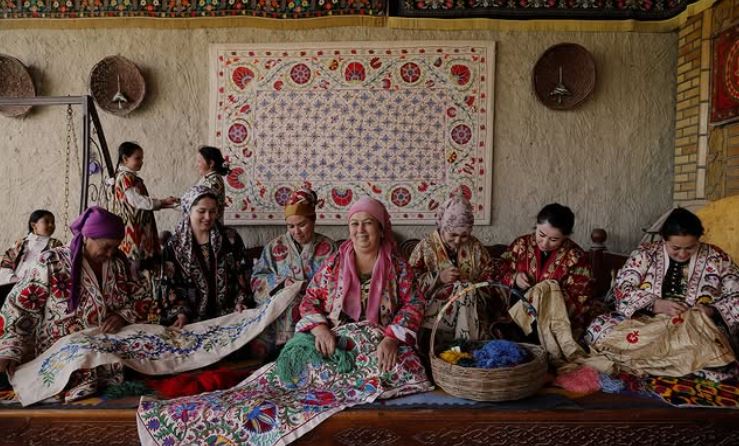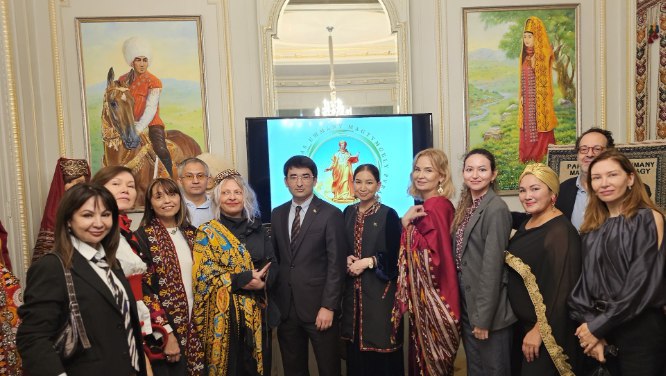Threads of Power: Women, Heritage, and the Art of the Silk Road
From June 24 to July 10, 2025, the Minerva Association will be presenting the exhibition Weaving the History of Central Asia at the Centre Paris Anim’ Espace Beaujon. This exhibition brings together the artworks of Fatimah Hossaini and the textile creations of Beltepà, paying tribute to the women of the region through the motifs and textile skills inherited from the Silk Road. In Central Asia, weaving, embroidery, and sewing have long been passed down from mother to daughter, practiced within the home and shared among craftswomen. These domestic yet deeply skilled practices embody an often-overlooked heritage, one that is both intimate and monumental. The exhibition sheds light on how art and fashion can transcend cultural and geographic boundaries, revealing stories of resilience, identity, and creativity. The exhibition celebrates women not only as artists and artisans but as powerful custodians of heritage. The handmade garments by the women of Beltepà, paired with Fatimah Hossaini’s striking photographic portraits, convey a sense of strength, dignity, and continuity. Together, these works send a compelling message: that of women’s empowerment and the intergenerational transmission of ancestral knowledge. Fatimah Hossaini’s artwork delves into themes of gender, identity, and cultural resilience. Her portraits of women in Central Asia illuminate lives and traditions that are often rendered invisible, offering a bold visual language that honors their presence and voices. The suzanis featured in the exhibition are rich with meaning. Every motif, color, and pattern tells a story, echoing the layered influences of the Silk Road and the women who continue these traditions today. Beltepà reinterprets traditional Uzbek fabrics — atlas, adras, bakhmal, and suzani — through a contemporary lens. Her collections merge craftsmanship with innovation, turning textiles into wearable artworks that reflect a living, evolving cultural identity.






